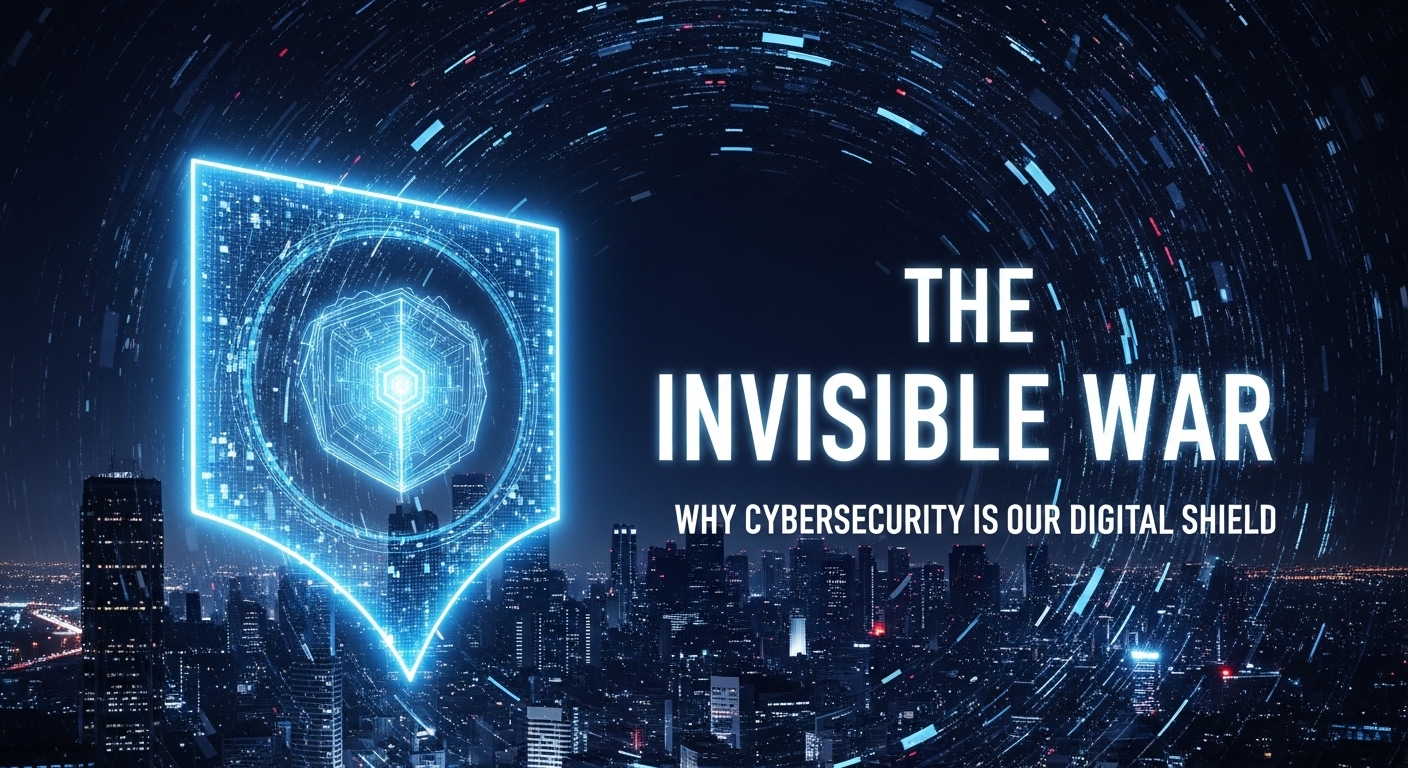In our increasingly interconnected world, where every aspect of our lives, from banking to healthcare, communication to commerce, is intertwined with digital technology, a silent but relentless war rages on. This is the realm of cybersecurity – the practice of protecting systems, networks, and programs from digital attacks, and ensuring the confidentiality, integrity, and availability of our invaluable data.
The Unseen Battlefield: Understanding Cyber Threats
Cybersecurity is not merely about preventing hackers; it’s a comprehensive defense against a constantly evolving arsenal of threats. These digital adversaries, ranging from individual malicious actors to organized cybercriminal syndicates and even state-sponsored entities, employ a variety of tactics:
- Malware: A broad term encompassing malicious software like viruses, worms, Trojans, spyware, and ransomware. Ransomware, in particular, has become a pervasive threat, encrypting a victim’s files and demanding payment for their release.
- Phishing and Social Engineering: These attacks exploit human psychology, tricking individuals into revealing sensitive information (like passwords or financial details) through deceptive emails, messages, or even phone calls (vishing) and text messages (smishing).
- Distributed Denial of Service (DDoS) Attacks: These attacks overwhelm a target system or network with a flood of traffic, making it unavailable to legitimate users. Often, these are used as a smokescreen for other malicious activities.
- Man-in-the-Middle (MitM) Attacks: Attackers intercept communication between two parties, allowing them to eavesdrop, modify data, or impersonate legitimate entities.
- Supply Chain Attacks: Cybercriminals target third-party vendors, suppliers, or software components to infiltrate larger organizations, leveraging a weaker link in the security chain.
- Zero-Day Exploits: These refer to vulnerabilities in software or hardware that are unknown to the vendor, allowing attackers to exploit them before a patch can be developed and deployed.
- AI-Driven Attacks: With the rise of artificial intelligence, attackers are increasingly using AI to create more sophisticated malware, automate attacks, generate convincing deepfakes for deception, and bypass security systems.
Why Cybersecurity Matters: Protecting Our Digital Fabric
The importance of robust cybersecurity cannot be overstated. A single cyberattack can have devastating consequences for individuals, businesses, and even national security:
- Financial Loss: Direct theft of funds, costs associated with incident response and recovery, legal fees, and regulatory fines can amount to astronomical figures.
- Data Breaches: Compromise of sensitive personal information, intellectual property, or critical business data can lead to identity theft, reputational damage, and loss of competitive advantage.
- Operational Disruption: Attacks can cripple essential services, shut down businesses, and even impact critical national infrastructure like power grids and transportation systems.
- Reputational Damage and Loss of Trust: For businesses, a cyber incident can erode customer confidence and lead to a significant loss of market share.
- National Security: State-sponsored cyber warfare poses a direct threat to national interests, including espionage, sabotage, and influence operations.
Building a Digital Fortress: Key Cybersecurity Best Practices
Defending against these threats requires a multi-layered approach involving technology, processes, and, crucially, human awareness:
- Strong, Unique Passwords and Multi-Factor Authentication (MFA): The first line of defense. MFA adds an extra layer of security, requiring a second form of verification beyond just a password.
- Regular Software Updates and Patching: Keeping operating systems, applications, and devices updated is vital to close known vulnerabilities that attackers might exploit.
- Antivirus and Anti-Malware Software: Essential tools for detecting and removing malicious software.
- Firewalls: Act as a barrier between a trusted internal network and untrusted external networks, controlling incoming and outgoing traffic.
- Data Backup and Recovery Plans: Regular backups of critical data, stored securely off-site or in the cloud, are crucial for recovery in the event of a successful attack.
- Employee Training and Security Awareness: The human element is often the weakest link. Educating employees about phishing, social engineering, and safe online practices is paramount.
- Zero Trust Architecture: A strategic approach where no user or device is trusted automatically, requiring continuous verification before granting access to resources.
- Incident Response Plan: A documented strategy for how an organization will react to and recover from a cybersecurity incident, minimizing downtime and damage.
- Encryption: Protecting sensitive data by converting it into a coded format, rendering it unreadable to unauthorized individuals.
- Secure Network Configurations: Properly securing Wi-Fi networks, using VPNs, and implementing secure network protocols.
The Horizon of Cybersecurity: Trends and Challenges
The cybersecurity landscape is constantly evolving, driven by rapid technological advancements and the ingenuity of cybercriminals. Looking ahead to 2025 and beyond, several key trends are shaping the future of this critical field:
- AI and Machine Learning: While a powerful tool for defense (threat detection, anomaly analysis), AI is also being weaponized by attackers, leading to an arms race in cyber capabilities.
- Increased Complexity of Attacks: Cyber threats are becoming more sophisticated, blending multiple attack vectors and leveraging advanced techniques like deepfakes and modular malware.
- Supply Chain Vulnerabilities: As organizations rely more on third-party services, securing the entire supply chain becomes a top priority, as it presents a significant attack surface.
- Geopolitical Cyber Activities: Nation-state actors continue to engage in cyber espionage and warfare, targeting critical infrastructure and sensitive data, often driven by geopolitical tensions.
- IoT Security: The explosion of interconnected devices, from smart homes to industrial sensors, presents new vulnerabilities that require dedicated security measures.
- Data Privacy Regulations: The global push for stronger data privacy laws (like GDPR) is driving organizations to enhance their data protection measures and compliance efforts.
- Cybersecurity Skills Gap: There’s a persistent shortage of skilled cybersecurity professionals, making it challenging for organizations to effectively defend against threats.
In this relentless digital arms race, cybersecurity is not a static solution but an ongoing commitment. It demands continuous vigilance, adaptability, and collaboration across individuals, organizations, and even nations. Only by prioritizing robust cybersecurity measures can we truly safeguard our digital future and navigate the complexities of our increasingly connected world with confidence and security.

